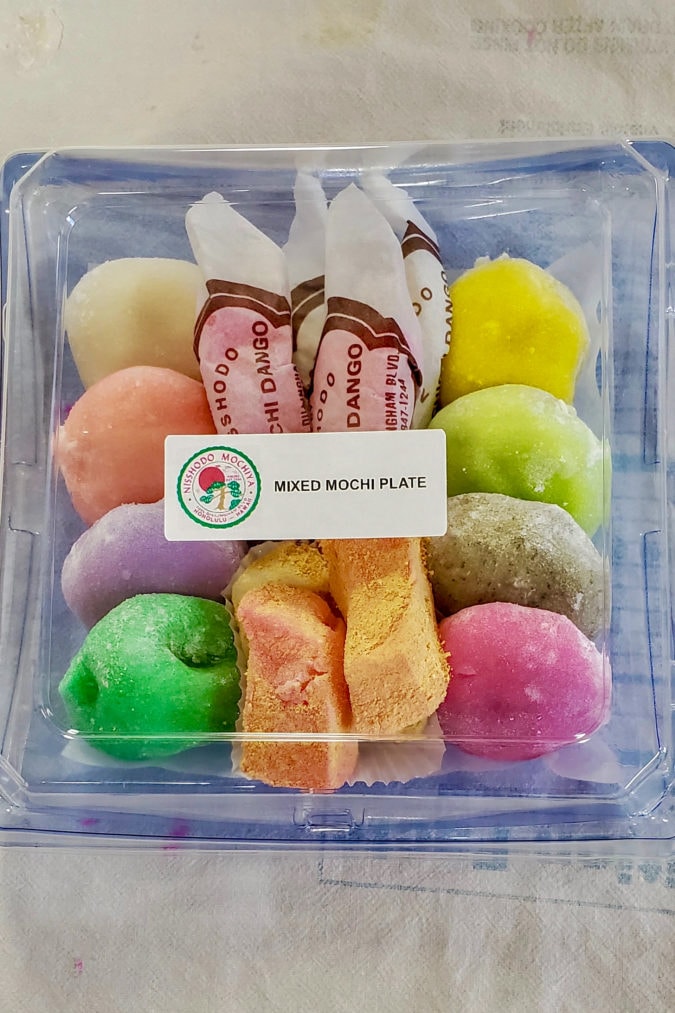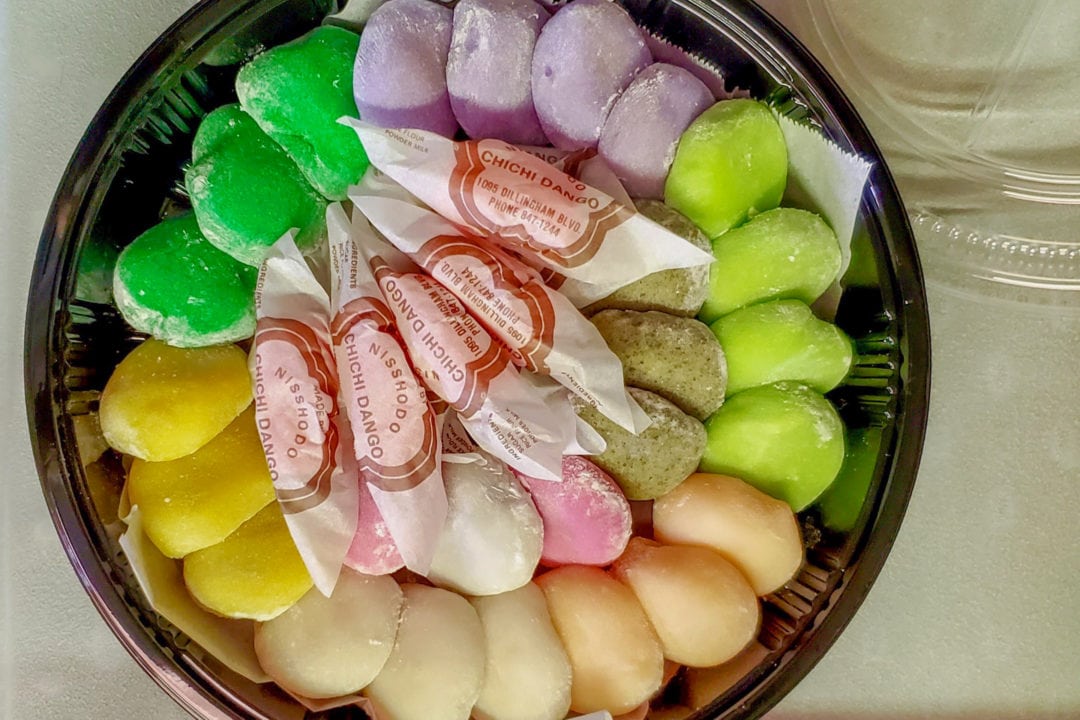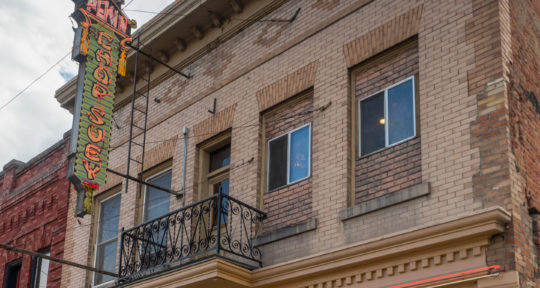There’s a certain cognitive dissonance that comes with walking into Nisshodo Mochiya in Honolulu, Hawaii. Located at the back of a gray, industrial-looking strip mall, the business would be nondescript if it weren’t for the hand-painted sign above the door. Going inside, however, is like stepping from black and white into a technicolor Oz.
Key Takeaways
- The third-generation Honolulu shop turns 100, staying open through World War II and ranking among America’s longest-running candy stores.
- Everything is made by hand using traditional methods, so small-batch production means popular mochi sells out by day’s end.
- The shop blends old-world techniques with tropical Hawaiian flavors like lilikoi and coconut, creating treats that delight locals and tourists alike.
Behind a glass case in the 12-by-12-foot room are thousands of vibrantly-hued Japanese candies. There’s monaka, a sweet made of azuki (red bean paste) pressed between pastel-colored mochi wafers shaped like cherry blossoms; manjū, a round jewel-toned flour cake stuffed with lima bean paste; kinako dango, a cotton candy colored sweet milk mochi covered in roasted soy bean powder; and bulbous mochi balls in a cavalcade of colors, just to name a few.
Three Generations of Handmade Mochi, Rooted in Hawaii
Mike Hirao, who took over the business from his father in 2010, is the third generation of his family to be in charge of what is now a 100-year-old Japanese confectionery. The original store (it’s since moved twice) was opened a century ago by Hirao’s grandfather, Asataro Hirao. He had come to Hawaii from Hiroshima, Japan, to work on a sugar cane plantation, but after a few years, he grew tired of that job and decided that Honolulu needed a store specializing in Japanese desserts.
Up until World War II, the store produced a variety of sticky Japanese candies, but it refocused on mochi due to wartime rationing. “Mochi didn’t require as much sugar and the business evolved because of it,” Hirao says. Because the store didn’t have to close during WWII, it ranks among some of the longest continuously operating candy stores (Japanese or otherwise) in the country.


Traditional Methods Meet Hawaii Flavors
Beyond its centenarian status, what makes Nisshodo unique is that even as mechanisms have been invented to speed up and ease the candy making process, it’s continued to carry on the traditional methods—ranging from making the bean pastes that serve as fillings from scratch to assembling each piece by hand.
“Sticking with that tradition is very, very important to us,” Hirao says.
While the approach may be unchanged, Hirao says they’ve taken some liberties with flavors. His grandfather stuck to customary red bean paste in the center of his treats, but Hirao has been known to swap in melon, lychee, lilikoi, pineapple, coconut, and other fillings influenced by the flavors of Hawaii.
“We try to incorporate some of the tropical flavors for variety and for people who come in from the mainland that aren’t familiar with these kinds of candies,” Hirao says.
According to Hirao, those more surprising flavors are also often scooped up by Japanese tourists hunting for omiyage—a custom that dictates bringing home gifts for friends, coworkers, and family members from one’s travels.
“But, other than the different flavors, we don’t stray too far away from what we started with 100 years ago,” Hirao says.
It’s an ethos that’s become increasingly harder to uphold as local stores discontinue certain mochi flours or cherry blossoms, or new legislation puts limits on what can be imported from Japan. Still, they are busy. Hirao says it’s common for the more popular items to sell out by the end of the day. “We can only do so much with one kettle,” he says, laughing.

What to Try: Chichi Dango and Other Popular Sweets
The most popular menu item—and the most likely to be gone long before closing—is chichi dango. The bite-sized gummy rice cake is sweetened with milk, pillowy soft, and usually comes in white or pink, though both are the same flavor. The busiest days of the year surround Girls’ Day on March 3 (and to a slightly lesser extent Boys’ Day on May 5). Traditionally, Girls’ Day is a Japanese holiday meant to wish for the health and happiness of women of all ages and is often celebrated by families of Japanese descent in Hawaii.
“Chichi dango is a popular way to celebrate the day,” Hirao says. “It is very, very busy around those times.”
Starting at the beginning of the year, Nisshodo gets inundated with orders for chichi dango (his small team ramps up production on the actual day, but only takes so many orders), as well as hishi mochi. The latter is a diamond-shaped treat with layers of white (for purity), pink (representing spring flowers and energy), and green mochi (to symbolize spring and new life).
Considering Nisshodo operates out of a warehouse and is fairly challenging to locate, Hirao says he sometimes marvels at the fact that people go so far out of their way to find his family’s humble shop.
“It’s difficult to find,” he says. “Initially we were going to just manufacture here and sell elsewhere, but people tended to come here, so we never got around to opening that retail outfit. We just have a really good community here.”
Plan Your Visit: Location, Hours, and Sell-Out Tips
Nisshodo Mochiya is open Monday through Friday from 7 a.m. to 4 p.m., Saturday from 7 a.m. to 3 p.m., and closed on Sundays.







